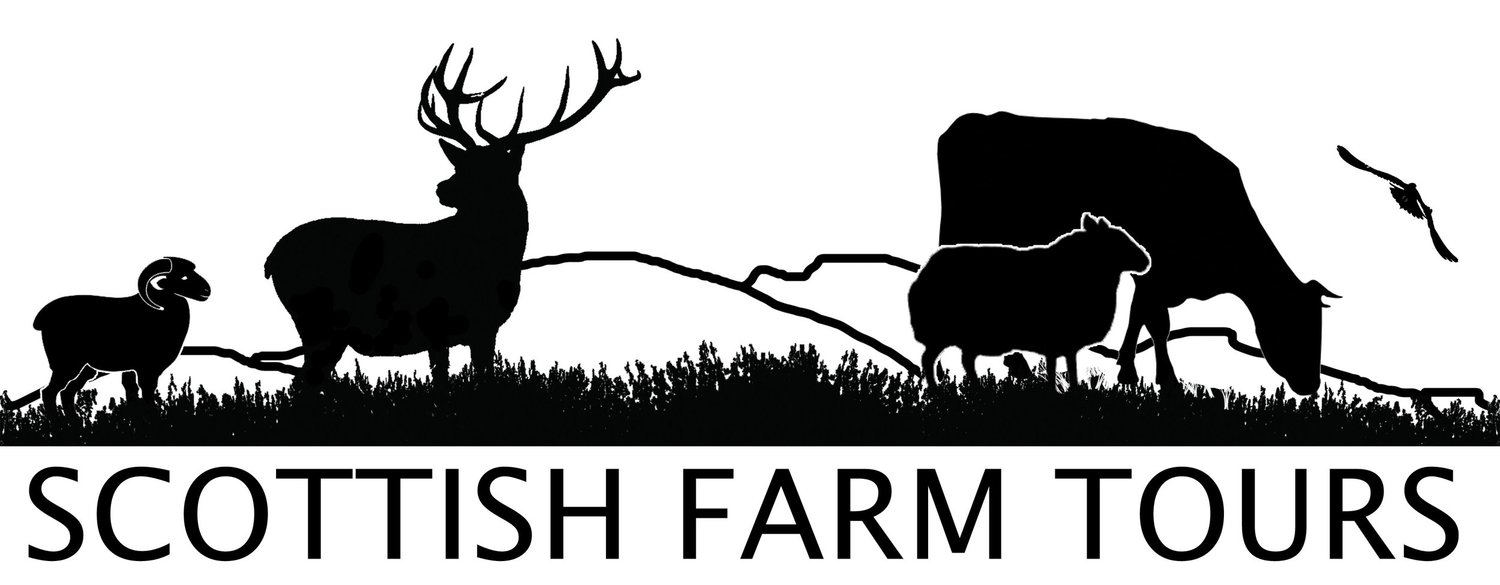Our Belted Galloway cows began to calve in April and by the end of the month 12 had calved but we had 13 calves. Unusually for us one of our older cows Balcorrach Nelly had twins. All very confusing for the cow as one of them was a good bit smaller and quite weak, so her instinct to mother them was split between the small heifer calf that just lay there looking miserable and larger, greedy bull calf who was wanting all the milk.
However a little bit of intervention goes a long way. We took the cattle crush down to the field, made a small pen, milked Nelly and gave the calves bottles of her milk then kept them in the pen overnight. By the second day the wee female had cheered up and Nelly was mothering them both. They are a bit smaller than the singles but should do fine. Unfortunately in cattle though if you have a male and female twin then the female is usually rendered infertile, in the farming world we call it a ‘freemartin’. The most widely accepted explanation for this is that sex hormones from the male twin pass across to the female twin while in the womb.
Nelly and her twins
All the other cows calved without a hitch but we will still have calves born into June and early July. Our bull Staffords Alexander has proved to be a good working bull. We replaced our old bull 2 years ago and so the calves being born now are the second batch for Alexander. The pregnancy of a cow is 9 months so he was certainly busy last summer! Once a cow has calved it is normally about 3 months before she is receptive again to the bull. This means that with some certainty cows will calve every 12 months at the same time of year. This of course harks back to before domestication when cows were wild animals and they would have been calving in spring to make the most of the growing vegetation over the summer months. Nowadays cows can calve at any time of year, but generally farmers will coincide calving with either spring or autumn, depending on their management regime.
As well as the cows calving our soay sheep are lambing. With the soays it just a question of ‘letting them get on with it’. Because of their wild nature if you try to intervene the ewe will abandon her lamb, in the same way as deer will abandon their fawns if disturbed. So all we do is keep an eye on proceedings and if there is a lonesome lamb then we will pick it up and hand rear it. This hasn’t happened this year but last year I ended up with two wee lambs.
The first one was born during the very cold weather we had last year and overnight must have got frozen. I found him in the morning as good as dead and brought him into the house and laid him on the under floor heating in the conservatory. He didn’t move but was breathing. Too weak even to suck a bottle I left him to ‘warm up’. It’s amazing what happens once warmth flows through the body and to my surprise by the next morning he just about raised his head off the ground.
He never looked back and hilariously formed a strong bond with my border terrier Moskki, even sharing her bed. I named him Yosa ( if you think about it is an anagram of ---- ).
Just as Yosa was starting to live outside and I thought I was rid of a lamb in the house, along came Skippy. Skippy was bright as a button, full of life but motherless! She must have been a few days old when we discovered her and in contrast to Yosa had real energy about her. She settled into house life very quickly and soon made herself at home, this time, on the sofa in the conservatory.
I managed to get her outside befriending Yosa quite quickly and soon they were best of buddies - but totally different. Luckily for me a local person got in touch looking for a couple of soays and I gladly passed the two lambs onto her. She was over the moon and they are star attraction with visitors to her self catering cottages on her smallholding.
Tilly



















